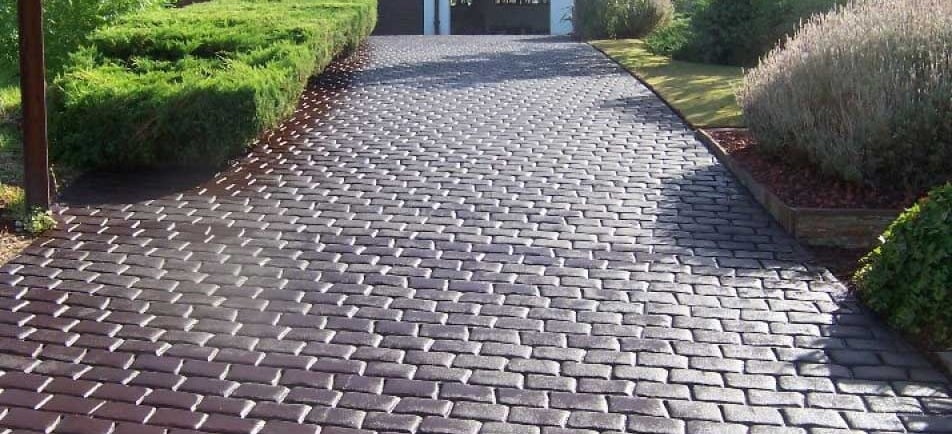Essential Maintenance Tips for Long-Lasting Concrete Finishes
2/25/20255 min read


Importance of Regular Cleaning
Maintaining cleanliness is crucial for preserving the beauty and durability of concrete finishes. Regular cleaning prevents the accumulation of dirt, grime, and stains that can compromise the aesthetic appeal and structural integrity of concrete surfaces. Over time, neglecting proper cleaning techniques can lead to irreversible damage, requiring costly repairs or even complete resurfacing. Therefore, implementing a consistent cleaning schedule is fundamental to extending the life of your concrete finishes.
To achieve effective cleaning, it is advisable to use mild soap and water as primary cleaning agents. These solutions are gentle on concrete surfaces and effectively remove everyday dirt without causing harm. For tougher stains, such as oil or rust, specialized cleaners designed for concrete can be utilized. It is essential to follow the manufacturer's instructions to ensure that these products do not adversely affect the finish.
The frequency of cleaning largely depends on the environment where the concrete is located. For residential patios or driveways, a bi-monthly cleaning schedule is usually sufficient. In high-traffic areas or commercial properties, weekly cleaning may be necessary to keep the surfaces pristine. Monitoring the level of dirt accumulation can help determine the appropriate cleaning frequency.
Common types of dirt and stains that may affect concrete finishes include mud, food residue, and leaf stains. These substances not only detract from the appearance of the concrete but can also lead to deterioration if they are not removed promptly. To effectively address these stains, it's essential to use the right cleaning methods tailored for each type. For instance, using a pressure washer can quickly remove stubborn dirt without requiring excessive scrubbing. Hence, regular maintenance through proper cleaning practices significantly enhances the longevity and visual appeal of concrete finishes.
The Role of Sealing in Concrete Maintenance
Sealing is a critical component of concrete maintenance that plays a significant role in preserving the integrity and appearance of concrete finishes. By applying a sealant, property owners can protect their concrete surfaces from various environmental factors, including moisture penetration, staining, and general wear and tear. The protective layer formed by sealants acts as a barrier, ensuring that water does not seep into the concrete, which can lead to cracking and other structural issues over time.
There are several types of sealants available for concrete, each tailored for specific applications and requirements. For instance, penetrating sealants work by infiltrating the concrete surface to offer deep protection against moisture, while topical sealants create a protective film that enhances the appearance of the surface. Additionally, there are decorative sealants designed to provide both protection and aesthetic enhancement, making them ideal for stamped or stained concrete finishes. Understanding the different types of sealants and their attributes can help in choosing the right product based on the concrete's use and location.
For optimal results, sealants should be applied at appropriate intervals. Typically, it is advisable to reseal exterior concrete surfaces every one to three years, depending on factors such as climate conditions and foot traffic. The application process is crucial for ensuring effectiveness; the surface must be clean and dry before application. Furthermore, using a sprayer or roller can help achieve an even coat, while working in small sections allows for better control. In conclusion, proper sealing significantly contributes to the longevity of concrete finishes, effectively extending their lifespan and maintaining their aesthetic appeal. Keeping up with a regular sealing schedule is essential to sustain the performance and durability of concrete surfaces.
Timely Repairs: Addressing Cracks and Damage
Concrete finishes are durable and designed to withstand various environmental conditions. However, over time, they are prone to developing cracks and other forms of damage. Addressing these issues promptly is essential to preserve the integrity and aesthetics of your surfaces. Minor cracks, if left unattended, can transform into more significant problems, such as water infiltration or structural instability. Therefore, recognizing and repairing these minor imperfections is vital in maintaining long-lasting concrete finishes.
There are several types of cracks commonly observed in concrete finishes. Hairline cracks are superficial and typically do not pose serious threats, while larger cracks can indicate more substantial issues, such as settling or overloading. Identifying the type of crack is the first step to determining the most effective repair method. For instance, surface cracks could be filled with a simple epoxy or polyurethane sealant, while wider cracks may require a more robust solution, such as a concrete patch or even re-stabilization of the underlying base.
Homeowners may choose to handle minor repairs themselves, which can be an effective approach for small hairline cracks. Such DIY repairs often involve cleaning the crack, applying a filler, and smoothing the surface. However, for more extensive damage or underlying structural issues, it is advisable to seek professional assistance. Experts have access to specialized materials and the expertise to ensure that repairs are both effective and durable.
In summation, timely repairs to concrete finishes are crucial in preventing minor issues from escalating. By understanding the types of cracks and employing appropriate methods for repairs, homeowners can significantly extend the lifespan of their concrete surfaces, ensuring both functionality and visual appeal over time.
Creating a Concrete Maintenance Schedule
Establishing a concrete maintenance schedule is fundamental to preserving the appearance and durability of your concrete finishes. A well-planned schedule helps you stay organized and ensures that necessary tasks are completed before minor issues escalate into major repairs. When creating this schedule, it is important to consider factors such as the type of concrete finish, environmental conditions, and the specific usage of the area, be it residential or commercial.
Cleaning should be a primary task in your schedule. It is advisable to clean your concrete surfaces at least once every three months. However, high-traffic areas or those exposed to harsh weather may require more frequent attention. Use a broom or leaf blower to remove debris, followed by a gentle wash using a mild detergent to eliminate stains and prevent the buildup of dirt. For deep cleaning, pressure washing can be an effective method, typically performed once or twice a year, depending on the wear and tear of the surface.
Sealing is another critical aspect of concrete maintenance. It is generally recommended to reseal concrete finishes every one to three years, with the exact frequency depending on the type of sealer used and the environmental exposure of the concrete. New concrete should ideally be sealed after approximately 28 days to allow for proper curing. Regular sealing protects the concrete from moisture and staining while enhancing its overall appearance.
Addressing repairs promptly is crucial in maintaining the integrity of your concrete. Inspect your surfaces regularly, especially after extreme weather conditions. Look for cracks, chips, or any signs of surface degradation. Small repairs can often be managed by homeowners with simple patching products, but more extensive damage may require professional assistance.
Finally, consider seasonal changes when planning your maintenance schedule. For instance, in regions where winters are particularly harsh, it may be necessary to use de-icing agents sparingly to prevent surface spalling. Adopting a proactive approach to maintenance not only ensures the longevity of your concrete finishes but also enhances the value of your property.
